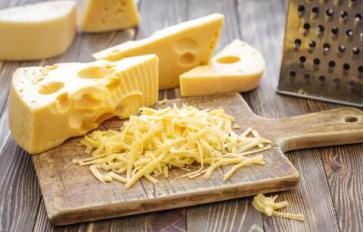
Persimmons are in the family Ebenaceae, commonly known as the Ebony family in the genus Diospyros L. Of the seventeen species, only two are native to America: the Diospyros virginiana L, also known as the common persimmon P; and the Diospyros texana Scheele, commonly known as the Texas persimmon P. These species have been used by the Native Peoples as a food, added to their bread recipes, and made into an alcoholic beverage. Persimmons were given to the Europeans in the 16th century; they incorporated the fruit into their recipes. In 1612, Captain John Smith recorded the fruit on his Map of Virginia, writing his interpretation of the Native language name for the fruit as “Putchanmins.” He mentions that they would place large amounts of the fruit on mats to dry as they would prepare prunes. Hernando de Soto found bricks of persimmons made by the various tribes along the Mississippi River. The other species originated in Asia and Africa and in the 19th century the Asian species was introduced to the New World by Commodore M.C. Perry. Persimmons are primarily a winter fruit found in most stores.
Again, there are several species of persimmons: two are native to North America, the common persimmon and the Texas persimmon. The common persimmon grows in deep, rich bottomlands and in higher elevations in well-drained, sandy soils. The tree grows among other hardwood trees and can be found from Connecticut west to central Pennsylvania and southeastern Iowa south through Florida and west to Texas. Its fruit is large and round in shape with coloring of orange or purple and grows from three-quarters to two-and-one-half inches in diameter with smooth skin that wrinkles when ripened. The Texas persimmon grows in Texas and northeastern Mexico with fruit that is smaller than the common persimmon and darker in color. The Asian species, known as the Japanese persimmon, is native of China and has become the dominant variety sold in the United States. It is a larger fruit than the plants native to America and is bright orange in color with the shape of an elongated tomato. It is sweet in flavor but not as flavorful as the American species and has a jelly-like texture. All varieties of persimmons must be eaten when fully ripe—otherwise they are not edible. The tree can also be incorporated into a landscape design because it is a hearty and easily grown plant. They are also a fun foraging plant.
Persimmons Are…
1. Nutrient-Dense
Packed with nutrients, persimmons contain vitamins A, C, K, and B6, manganese, fiber, antioxidants, and phytonutrients. These nutrients and others help to keep the body healthy and functioning properly.
2. High in Fiber
The high fiber content in persimmons is beneficial to the digestive system. It helps the small intestine to absorb nutrients and bulks the stool for a timely evacuation, cleaning the walls of the large intestine. The result is less risk of developing infection and colon cancer.
3. Cancer Fighting
The antioxidant and phytonutrient content in persimmons helps to reduce the risk of cancers. They function to bring oxygen to damaged cells, preventing the development of cancer cells. They neutralize free radicals, thus preventing damage to DNA. Found in the fruit is betulinic acid, which inhibits the growth of tumors that can develop into cancer.
4. Eye Health Support
Persimmons contain lutein and zeaxanthin that are beneficial for healthy vision. These substances work to keep the retina healthy and strong and help to improve vision. They also prevent macular degeneration and protect the eye from damaging U/V rays and eye infections.
Today, persimmons can incorporated in recipes like cookies, and they can be eaten as a snack or added to salads. Persimmons can be dried, and as they have been for centuries, fermented into a mead type alcoholic beverage. It is not only a sweet treat but has many nutrients that help to maintain a healthy body and prevent diseases.
The tree is also an ornamental plant that enhances any landscape and attracts wildlife. The versatility of the entire plant makes persimmons a natural on the list of superfoods.








